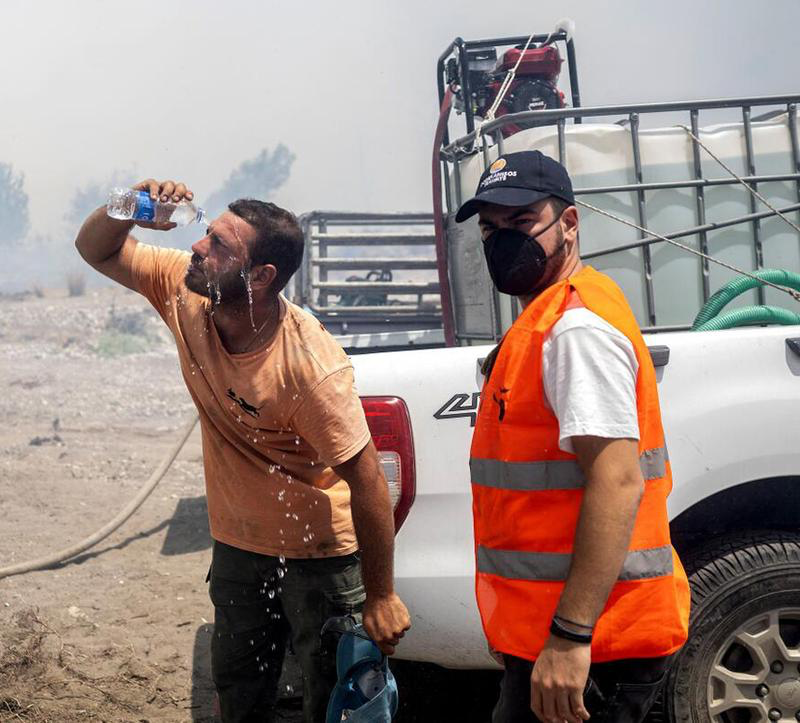
Disclaimer: Copyright infringement not intended.
Context
The delicate balance between trust in scientists and effective climate action.
Details
- Modern societies have a significant level of trust in scientists, particularly in the context of addressing climate change.
- Balancing accurate information and climate action is crucial for maintaining trust and achieving effective initiatives.
- Mismanagement of trust can result in irreversible damage to climate change efforts.
Misleading Headlines
- Recent headlines claimed a specific day in July was the warmest in over 100,000 years.
- Such claims are scientifically inaccurate due to limitations in temperature estimation methods.
Temperature Estimation Methods
- Temperature estimates from before thermometers existed are derived from "palaeo proxies," which are biological and chemical indicators of temperature.
- These proxies respond to temperature anomalies relative to a baseline, typically from modern times with thermometer records.
- Isotopes with steady radioactive decay rates also contribute to temperature estimates, based on their half-lives.
Temporal and Spatial Limitations
- "Paleo proxy" techniques assume that past processes producing proxies operated similarly to present conditions.
- Proxies in ocean and lake sediments record temperature anomalies on timescales of centuries to thousands of years.
- Shorter timescales are estimated from tree rings, corals, and shells, but only provide weekly or seasonal temperature anomalies.
- Proxies offer local or regional estimates with uncertainties, making global estimates even more uncertain.
Holocene Epoch
- Holocene epoch's temperature-related anomalies provide insights into the response of modern humans to climate change.
- Climate-related events weren't always the main cause of civilizations' demise during this epoch.
- Modern human ancestors survived significant climatic changes over evolutionary timescales.
Climate's Rear-View Mirror
- Palaeoclimate offers insights into future climate evolution but mainly over longer timescales.
- Daily weather variations are influenced by multiple factors, making daily temperature estimation challenging.
- Global warming can lead to record-breaking warm months and years but not necessarily record-breaking warm days.
Scientific Rigor and Climate Action
- Reporting alarmist claims without scientific rigor undermines credibility and trust.
- Urging climate action while sacrificing accuracy risks damaging climate change efforts.
- The "end justifies the means" approach could harm trust in scientists and government officials.

About Paleo Proxy Technique
The Paleo Proxy Technique is a method used by scientists to reconstruct past climates and temperature variations by analyzing indirect indicators or "proxies" found in natural materials.
Definition of Proxies
Proxies are biological, chemical, or physical indicators that respond to temperature changes or other environmental conditions, preserving a record of past climate in their properties.
Types of Proxies
Various types of proxies are utilized to reconstruct past climates:
- Sediment Cores: Sediments from lakes and oceans accumulate over time, trapping organic materials and microorganisms. These sediments contain different layers representing different time periods and can provide information about past temperatures through the analysis of specific compounds.
- Tree Rings: Tree growth rings vary in width based on climate conditions like temperature and precipitation. Wider rings typically indicate warmer and wetter conditions, while narrower rings suggest cooler and drier periods.
- Ice Cores: Ice cores drilled from glaciers and polar ice sheets provide insights into past atmospheric conditions. Gases trapped in ice cores reveal ancient atmospheric compositions, which can be correlated with temperature changes.
- Corals and Shells: Corals and shells form growth layers that contain information about past ocean temperatures and chemical compositions.
- Pollen Analysis: Pollen grains preserved in sediment layers can indicate changes in vegetation and climate over time.
Methodology
The Paleo Proxy Technique involves several steps:
- Sample Collection: Researchers collect samples of proxies from various sources such as sediment cores, tree rings, ice cores, corals, and shells.
- Laboratory Analysis: Scientists analyze the samples using sophisticated techniques like isotopic analysis, chemical composition analysis, and microscopy. They look for specific properties that correlate with past temperature variations.
- Calibration: Calibration involves establishing a relationship between the proxy data and modern temperature measurements. This allows researchers to convert proxy data into temperature estimates for the past.
- Interpretation: By comparing proxy data from different sources and regions, researchers reconstruct past temperature patterns and climate variations. Proxy records are often combined to create longer and more comprehensive climate histories.
Limitations and Assumptions
The Paleo Proxy Technique has certain limitations and assumptions:
- Temporal and Spatial Resolution: Proxies provide information on temperature anomalies rather than precise temperature values. Data may be limited to certain time scales (centuries to millennia) and specific geographic regions.
- Proxy-Climate Relationship: The relationship between proxies and climate variables may not be uniform across all time periods and regions. Calibration is necessary to accurately infer temperature changes.
- Proxy Preservation: Proxies may degrade over time, affecting the accuracy of temperature reconstructions.
Applications and Importance
The Paleo Proxy Technique contributes to our understanding of Earth's past climate dynamics and helps in:
- Studying Natural Climate Variability: Proxy records reveal natural climate variations and cycles, such as ice ages and interglacial periods.
- Assessing Human Impact: By comparing natural climate changes to recent trends, scientists can assess the impact of human activities on the climate system.
- Improving Climate Models: Proxy data provide valuable information for validating and improving climate models used to predict future climate scenarios.
- Informing Climate Policy: Knowledge of past climate variations informs policies and strategies for adapting to and mitigating current and future climate changes.
|
PRACTICE QUESTION
Q) How can the balance between accurate scientific information and climate action be maintained to ensure public trust and effective efforts in addressing climate change? (150 words)
|
.jpg)
https://epaper.thehindu.com/ccidist-ws/th/th_delhi/issues/46052/OPS/GFVBIGE48.1+G9IBIH84I.1.html




